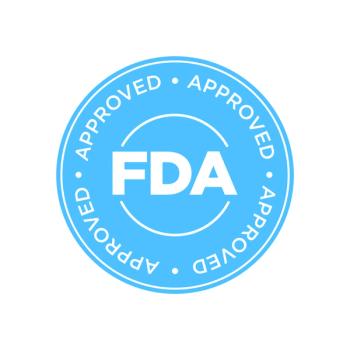
Clinical trials do not represent real world
Efficacy and safety outcomes of clinical trials involving biologic psoriasis drugs overstate these drugs' real-world utility, shows a JAMA Dermatology study.
Efficacy and safety outcomes of clinical trials involving biologic psoriasis drugs overstate these drugs' real-world utility, according to a study published in JAMA Dermatology.
Investigators applied eligibility criteria for pivotal trials of etanercept, adalimumab and ustekinumab to patients in the British Association of Dermatologists Biologic Interventions Register (BADBIR) and found that patients categorized as ineligible achieved smaller absolute changes in Psoriasis Area and Severity Index (PASI) scores after six and 12 months. Ineligible patients also had significantly higher rates of serious adverse events (SAEs) versus eligible patients.
"This study is important in helping clinicians to moderate their own and patients' expectations of clinical-trial safety and efficacy results when discussing biologic therapies," said first author Kayleigh J. Mason, Ph.D., of the University of Manchester, United Kingdom.
The findings were consistent with a study involving the Spanish biologic register, BIOBADADERM, Dr. Mason said. This study, published in 2012 in the Archives of Dermatology, revealed a gap in safety outcomes between a real-world registry and clinical trials, Dr. Mason said. When she and her co-authors factored in effectiveness data, which was not done in the BIOBADADERM study, their study also identified that patients ineligible for clinical trials did not achieve the same effectiveness with biologic therapies as did eligible patients.
"As our patients received other therapies that were not washed out prior to initiating a biologic therapy, our baseline PASI values are lower than those reported in clinical trials," she said. The study was published in JAMA Dermatology online on March 20, 2018.
Set up in 2007, BADBIR incorporates some 16,000 patients recruited from 157 dermatology centers in the UK and Ireland. Investigators applied eligibility criteria extracted from phase three licensing trials for etanercept, adalimumab and ustekinumab to patients in this registry. Investigators also searched online resources for additional eligibility criteria; AbbVie (adalimumab), Janssen (ustekinumab) and Pfizer (etanercept) did not answer their requests for study protocols.
Among BADBIR patients who had completed at least one follow-up visit, researchers determined that 56 percent of etanercept-treated patients would have been considered clinical-trial eligible, as would 56 percent of adalimumab-treated patients and 46 percent of ustekinumab-treated patients.
Median baseline PASI in BADBIR was 14 (etanercept and adalimumab) or 15 (ustekinumab). Differences in six-month PASI scores between eligible and ineligible patients ranged from -1.0 (etanercept) to -4.0 (adalimumab), with the ustekinumab differential at -3.3. Twelve-month adalimumab PASI results (-14.6 for eligibles, -9.9 for ineligibles) revealed the widest gap between eligible (-14.6) and ineligible patients (-9.9; difference = -4.7). The differentials for etanercept and ustekinumab at this point were -0.3 and -3.3, respectively. Absolute PASI changes among patients with insufficient baseline PASI ranged from -2.4 (etanercept, six months) to -7.8 (ustekinumab, 12 months).
Although the pivotal trials excluded patients with PASI of less than 10 (etanercept) or 12 (adalimumab and ustekinumab) or missing baseline PASI scores, said Dr. Mason, "We did not consider patients with only an insufficient or missing baseline PASI to be ineligible for clinical trials." Patients with only a missing baseline PASI fulfilled no other exclusion criteria, she explained, and a greater proportion of patients with only insufficient baseline PASI were receiving a previous or concomitant systemic therapy at the time their baseline PASI was recorded. "If patients with an insufficient PASI in BADBIR were washed out as for clinical trials, it is possible that they would have achieved the PASI values required for trial entry."
Patients categorized as ineligible were significantly more likely than eligible patients to experience SAEs in the first 12 months after starting biologic therapy – incident risk ratios (IRRs) for etanercept, adalimumab and ustekinumab were 1.9, 2.0 and 2.8, respectively. These figures are comparable to the IRR of 2.6 in the BIOBADADERM study. For each drug in BADBIR, cumulative incidence of drug discontinuation was similar between the eligibility categories.
The gap between efficacy and safety outcomes in clinical trials and real-world practice argues for greater transparency regarding clinical-trial protocols and the rationale behind them, wrote Mason et al. The publication of full protocols for the phase three psoriasis trials of secukinumab represents a step in the right direction, Dr. Mason said. However, "Justification for the eligibility criteria is lacking in the protocols, and that gap needs to be addressed."
As eligibility criteria for phase three trials are unlikely to change, she added, "The use of alternative prelicensing study designs and/or having postmarketing studies set at the time of licensing would be beneficial." In the Salford Lung Study, for example, patients with chronic obstructive pulmonary disease (COPD) randomized to receive a new inhaler in the first 12 months of therapy showed an 8.4% reduction in COPD exacerbations, replicating phase three findings.
Investigators could not apply the eligibility criteria they extracted and as robustly as they would have liked for two main reasons, said Dr. Mason. Clinical-trial manuscripts provided poor definitions for terms such as "immunocompromised," she explained, and in other instances BADBIR does not collect the same data (e.g., contraceptive use in females of childbearing potential) that clinical trials do.
DISCLOSURES
Dr. Mason has received honoraria from Janssen and Eli Lilly. The British Association of Dermatologists (BAD) receives income from AbbVie, Janssen, Novartis, Samsung Bioepis, Eli Lilly and Pfizer. This income finances a separate contact between the BAD and the University of Manchester, which coordinates BADBIR.
REFERENCE
Mason KJ PhD, Barker JN MD, Smith CH MD, et al. "Comparison of drug discontinuation, effectiveness, and safety between clinical trial eligible and ineligible patients in BADBIR," JAMA Dermatology. March 2018.
Newsletter
Like what you’re reading? Subscribe to Dermatology Times for weekly updates on therapies, innovations, and real-world practice tips.

















